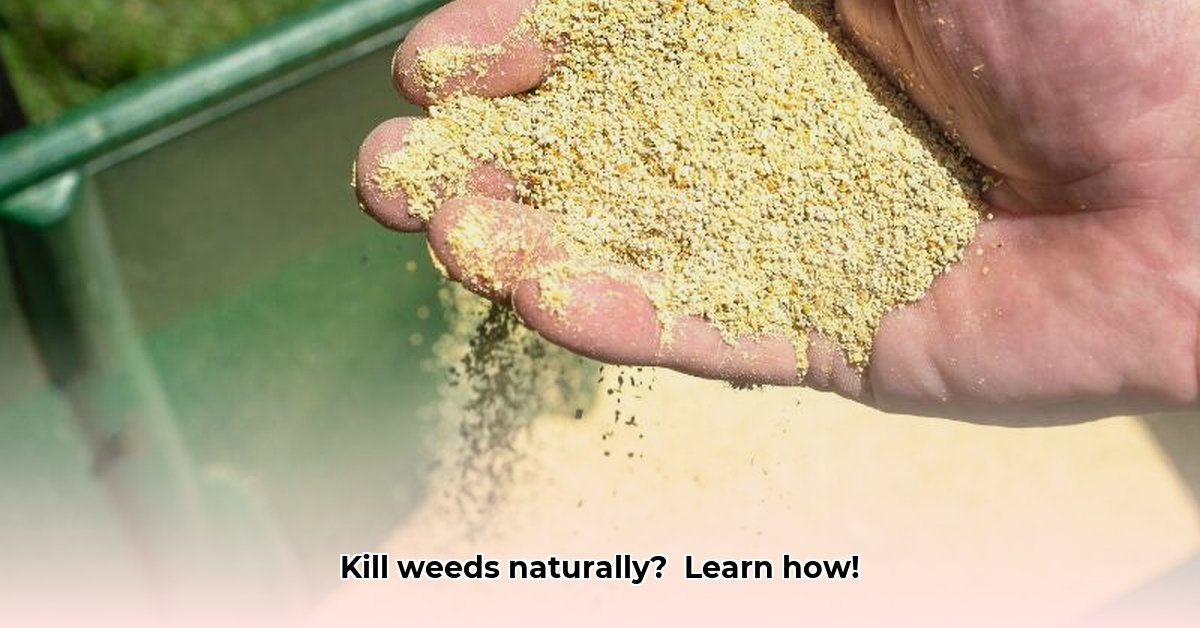
Thinking about swapping harsh chemicals for a more eco-friendly weed control solution? Corn gluten meal (CGM), readily available at Tractor Supply, offers a natural alternative. But before you grab a bag, let's delve into how to effectively use this organic solution. This guide will cover application, choosing the right product, limitations, troubleshooting, and safety, comparing CGM to other methods along the way. For more information on CGM availability, check out this helpful resource: Tractor Supply CGM info.
Understanding Corn Gluten Meal: Nature's Weed Preventer
Corn gluten meal (CGM) is a byproduct of corn processing. Unlike chemical herbicides that kill weeds directly, CGM acts as a pre-emergent weed preventer, stopping weed seeds from sprouting. It's a natural barrier, preventing weeds from even emerging! However, it's not a miracle cure; its effectiveness depends on correct usage and environmental factors.
Applying Corn Gluten Meal: A Step-by-Step Guide
This step-by-step guide will help you maximize CGM's effectiveness for weed control.
Step 1: Preparation: Before applying CGM, mow your lawn to a consistent height and remove existing weeds. CGM prevents germination, not established plants.
Step 2: Measuring CGM: The standard rate is 20 pounds per 1000 square feet. However, heavier weed infestations may require slightly more. Don't exceed the maximum recommended application rate, as this can impede effectiveness. Have you considered adjusting the application rate based on your specific weed pressure?
Step 3: Even Spreading: Use a drop spreader for even distribution across your lawn. Uneven application leads to inconsistent results. Ensure consistent coverage for optimal CGM performance.
Step 4: Post-Application Waiting Period: Avoid watering for at least 24-48 hours after application. Water can wash away the CGM before it can effectively prevent weed germination. Patience is key for successful CGM weed control; dry conditions are crucial for its efficacy.
Step 5: Monitoring: CGM isn't an instant solution. Regularly inspect your lawn for any emerging weeds. Some small sprouts might appear, even with proper application.
Choosing the Right Corn Gluten Meal: Quality Considerations
CGM quality varies. Look for products with a high protein content (60% or higher). Higher protein levels generally correlate with stronger weed-suppressing effects. Check the source and brand reputation for consistency.
Limitations: Realistic Expectations
CGM isn't a silver bullet. Its effectiveness depends on several factors:
- Weed Type: CGM works best on annual grasses (e.g., crabgrass). Perennial weeds, with established root systems, are less affected.
- Weather: Heavy rainfall immediately after application can wash away the CGM. Dry weather maximizes its efficacy.
- Soil Conditions: Soil type influences CGM absorption and retention.
Troubleshooting and Complementary Methods
If results are subpar, consider these factors: inadequate application, poor timing, heavy rainfall, or pre-existing weeds. A multi-pronged approach, combining CGM with hand-weeding or mulching, often yields better weed control. Dr. Emily Carter, Horticulturalist at the University of California, Davis, suggests: “Combining CGM with other techniques like mulching and hand-weeding provides a more comprehensive approach."
Safety Precautions: Handling and Storage
Wear gloves during application to prevent skin irritation. Store the CGM in a cool, dry place, out of reach of children and pets. Always refer to the product label for specific instructions.
Cost-Effectiveness Compared to Synthetic Herbicides
While initially seeming pricier than synthetic herbicides, CGM's long-term ecological benefits and reduced chemical exposure might make it a worthwhile investment. The overall cost-effectiveness depends on the specific needs of your lawn and the combined approach used.
Alternatives and Integrated Pest Management (IPM)
CGM is most effective as part of a broader weed management strategy. Complementary organic methods, such as hand-weeding, mulching (to suppress weed growth and retain moisture), and regular lawn maintenance, significantly boost its efficacy. This holistic approach, known as Integrated Pest Management (IPM), is often the most effective and sustainable strategy.
Pros and Cons of Using Corn Gluten Meal
| Pros | Cons |
|---|---|
| Environmentally friendly | Effectiveness varies; not a guaranteed weed-free lawn |
| Provides slow-release nitrogen | Requires more planning and effort than chemical herbicides |
| Relatively easy to apply | Can be more expensive than synthetic alternatives, depending on need |
| Widely available at Tractor Supply | Primarily a pre-emergent; less effective on established weeds |
Remember, consistent application, proper timing, and a realistic approach are vital for successful weed control using CGM. Consider it a long-term investment in a healthy, chemical-free lawn.